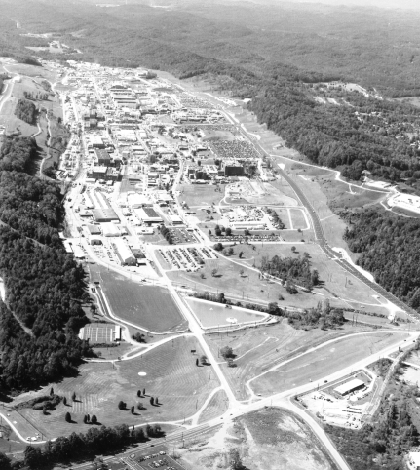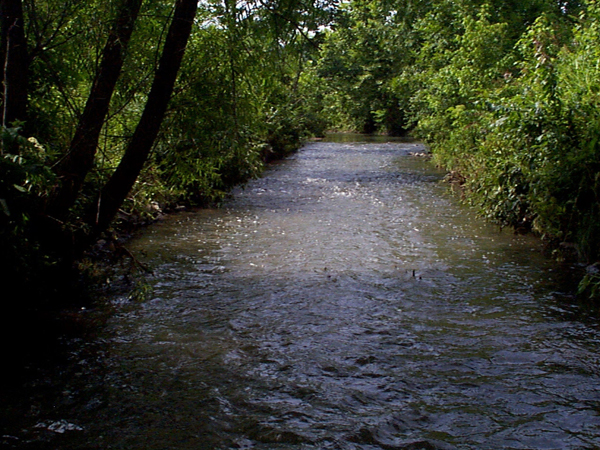Mercury from ’50s nuke development still vexes creek

In the 1950s and ’60s, a federal lab that prepared materials for thermonuclear weapon development leaked an estimated 280,000 pounds of mercury into the headwaters of East Fork Poplar Creek in Tennessee. Another 428,000 pounds were lost to the soil around the lab.
Decades of cleanup and restoration work have drastically cut mercury concentrations in the water, yet enough of the toxic metal remains in the system to render the creek’s fish unsafe to eat. To better understand the contamination, scientists at the Oak Ridge National Laboratory are intensifying their research and monitoring efforts on the creek.
Beginning in 1955, scientists at the Y-12 plant in Oak Ridge used massive quantities of mercury to prepare lithium ions for thermonuclear weapons. Though production wound down in 1963, enough mercury had leaked into the environment through spills and other losses that it continues to vex the creek today.
“Even though the use of that mercury ended 50 years ago, we’re still getting releases of the inorganic mercury at the headwaters into this creek,” said Ami Riscassi, a postdoctoral research associate with the Oak Ridge Institute for Science and Education.
One goal of the lab’s research is to gain a better understanding of where the mercury is coming from. Though point sources are an issue, groundwater and overland runoff are also potentially important sources of the metal. Riscassi said they also hope to learn more about where in the creek, and under what conditions, inorganic mercury is converted into methylmercury. Unlike elemental mercury, the methylmercury compound is easily taken up by organisms and integrated into the food chain, where it ultimately accumulates in fish tissue.
The lab’s intensified effort includes a water quality sonde installed in the lower reaches of the creek that records measurements from a variety of environmental sensors every 15 minutes. In addition to standard water quality parameters like dissolved oxygen, pH and temperature, the sonde is measuring turbidity and fluorescent dissolved organic matter in the creek. Previous research has shown that measurements of turbidity and organic matter tend to be linked to mercury concentrations, Riscassi said.

East Fork Poplar Creek (Credit: Oak Ridge National Laboratory)
By comparing the sonde’s continuous turbidity measurements with particulate mercury concentrations in samples taken from East Fork Poplar Creek, the researchers might be able to shed more light on the creek’s mercury sources. A link between the turbidity and mercury, especially during storm events, could make more clear the relative contributions of groundwater or overland runoff to the creek’s mercury levels.
Measuring dissolved organic matter could help because it has a tendency to bind with mercury, Riscassi said. Recent studies in other watersheds have shown a strong relationship between organic carbon and mercury concentrations.
The data from East Fork Poplar Creek have so far shown a strong relationship between turbidity and mercury concentrations in the summer and fall. It’s still too early to say whether that’s the case for dissolved organic matter. If it does prove useful, it will be just one of many tools in a larger research effort to understand mercury in the creek. That understanding will hopefully be able guide the direction of future work to bring concentrations down to safe levels.
“We’re really in the middle of a large data collection effort,” Riscassi said. “Data is coming in on a daily basis, and so we hope to use this in conjunction with a lot of other studies that are going on in the East Fork Poplar Creek to point us in that right direction.”
Image: The Y-12 plant where thousands of pounds of mercury leaked into the environment (Credit: Department of Energy)




0 comments